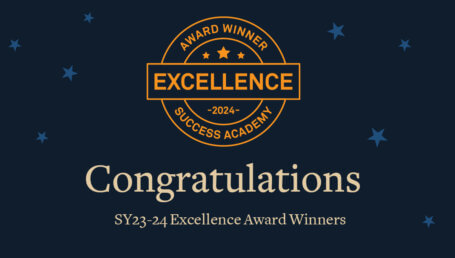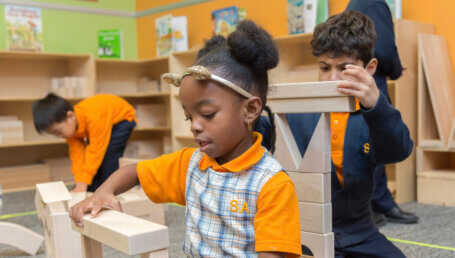
This post originally appeared on Educators4Excellence.org
A few weeks ago, one of my fifth grade students asked a simple question that challenged me to think differently about my own pedagogy and powerfully illustrated the value of the Common Core’s commitment to a deeper, conceptual understanding of mathematics.
We were reviewing word problems that asked students to divide fractions with uncommon denominators. As a history and language arts teacher, I had worked with a math teacher to create skill-based practice opportunities for my homeroom students during our snack or transition time.
The problem was simple and so was the procedure. The question asked for the amount, as a fraction, that each of three people would get if they shared 1/6 of a barrel of apples among them. One student used the familiar “keep-change-flip” procedure to solve the problem. Another student, who had been stuck on this particular problem, asked, “Well, why does that [procedure] actually work?”
I had a moment of panic. I could apply the procedure reflexively, much like my first student, but I could not answer this straightforward question. Why? Because, unlike my students, I had simply been taught a procedural approach to math problems for my entire educational career. And most measures of American math prowess show that I am not alone. The most recent PISA assessment continues to show even the top-performing U.S. students are falling far behind international peers.
So, naturally, I made the best teacher move in the moment and deferred to another student in the class. This student clearly and confidently used a visual model of the problem, shown below, to explain that one-sixth divided by three also represents one-third of one-sixth. Her understanding providing a conceptual explanation for the “keep-change-flip” procedure that my students could take away and use flexibly in real-world problems.
My school’s approach to math instruction heavily emphasizes diversity in problem-solving approaches. Multiple approaches encourage students to start from visual modeling and student-led discussion to discover how a procedure represents a mathematical concept; then students apply that procedure to represent their understanding. This approach, known as cognitively guided instruction, flows naturally from the Common Core’s emphasis on deeper study – focusing on fewer mathematical concepts to explore the flexible ways they can be used. And this is precisely the kind of thinking that our students need to be successful in a 21st-century economy.
Unfortunately, the shift to authentic understanding encouraged by the new standards has gotten quite a bit of criticism in the media, with public figures like comedian Louis C.K. parodying his daughter’s homework with comical examples like, “Bill has three goldfish. He buys two more. How many dogs live in London?”
In truth, this kind of criticism stems from the very real confusion many parents and – as in my case – even teachers experience when adopting conceptual math instruction. Rather than blame the Common Core as “overcomplicating” math, reflect on the reality that Americans have learned math in a rote, procedural way for a long time. New methods inevitably cause confusion.
From my own school experience, I am confident that rote memorization and methods haven’t done much to make math classes engaging or inspiring. As author Elizabeth Green has pointed out, teachers and parents rely largely on their own educational experience in teaching children, which makes sense, but poses “a problem since their instruction wasn’t very good”.
So, how can we change this and embrace the kind of conceptual understanding that the Common Core aims to encourage? The answer, at least on an individual level, may be as simple as that day in my classroom. We, as adults, have to be ready to accept that our understanding of mathematics needs to change before we can reverse these outcomes for our students.
Fully embracing the Common Core won’t be easy. As with any attempt to change conventional wisdom, the mockery likely won’t stop soon. The good news is that as times passes, more and more students will have been taught with conceptual understanding at the forefront and they too will become parents and teachers. For them, authentic mathematical understanding will not be novel, but the new norm. I, for one, believe our students – and country – will be all the better for it.








